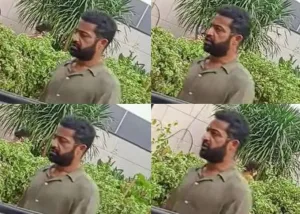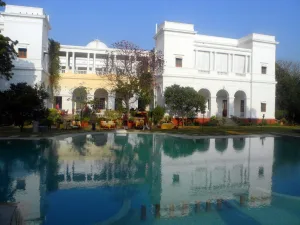Meta Description: Dharmasthala is at the heart of a chilling forensic investigation involving skeletal remains, mass graves, and decades of alleged cover-ups. Discover the 7 shocking truths today.
📍 Introduction
Dharmasthala, a sacred pilgrimage town in Karnataka, is now the focus of one of India’s most alarming crime investigations. What began as whispers has turned into a full-blown forensic case involving skeletal remains, mass graves, sexual violence, and systemic impunity. A whistleblower’s shocking testimony has led to official forensic analysis of exhumed remains, raising nationwide demands for justice.
This article uncovers 7 critical findings from the ongoing investigation and explains how forensic science is unraveling decades of secrets buried under silence.
1️⃣ Remains in Court: Evidence Seized Under Legal Oversight
On July 11, 2025, the former sanitation worker who worked in Dharmasthala from 1995–2014 appeared in court with actual skeletal remains. These were formally seized by the Belthangady police in front of advocates and panch witnesses.
➡️ Why it matters: The documented seizure created an unbroken chain of custody, ensuring the remains can be admissible in court.
📎 Source: New Indian Express – Police seize skeletal remains in Dharmasthala case

2️⃣ Photographic Proof Adds to the Gravity
The whistleblower also submitted color photocopies and digital photographs of additional skulls and bones. These images, said to have been taken during secret exhumations, provide visual validation of the testimonies.
➡️ These visuals now serve as key forensic evidence and support the complainant’s claim of over 100 buried victims near the Netravathi River.
3️⃣ Forensic Teams Begin Scientific Analysis
A team of forensic experts was dispatched to Belthangady immediately after seizure. Their job: to determine age, sex, ancestry, trauma patterns, and time since death through advanced lab testing.
⚙️ Tests include:
- Osteological profiling
- DNA testing (to match missing persons)
- Trauma analysis for signs of strangulation, acid burns, or blunt force
📎 Read more on forensic standards at:
International Association for Identification – Human Remains Processing
4️⃣ Plans for More Exhumations Pending Legal Clearance
The whistleblower claims many more victims lie buried in Dharmasthala’s forest areas, fields near the temple, and riverbanks. He has offered to guide police to these mass graves.
🛑 However, further exhumations require:
- Court-issued orders
- Medical and archaeological supervision
- Mahazar (site documentation)
This has triggered concern about delays in police response, a point raised by legal activists.
📎 Related guide: India’s CrPC Section 164 – Recording Witness Testimony (DoFollow)
5️⃣ Advanced Tests Requested for Complainant Verification
The CID has moved to perform the following on the whistleblower:
- Narco-analysis
- Lie detector test
- Brain mapping
These tests are legally permitted only with consent, but could strengthen his claims by showing consistency between memory and confession.
📎 Learn more: National Forensic Sciences University – Forensic Psychology & Narco Techniques
6️⃣ Legal Complications and Identity Leaks Hamper Progress
Despite the weight of evidence, the investigation faces hurdles:
- Police leaked press notes revealing the whistleblower’s identity
- Delayed mahazars (on-site inspections)
- No updates on initial forensic results
- Threats against the whistleblower and calls for witness protection under the 2018 Witness Protection Scheme
📎 Know the law: Witness Protection Guidelines – Ministry of Home Affairs (India)
7️⃣ SIT (Special Investigation Team) Hangs on Forensic Outcome
The Karnataka government has said it will form a Special Investigation Team (SIT) only if forensic reports support the need. With public pressure, protests, and multiple victims’ families speaking out, activists argue that waiting for more proof delays justice.
👥 The State Women’s Commission has already asked for a 20-year data review on missing women in the region.
📎 Coverage: India Today – Mass graves and the case for SIT in Dharmasthala
🧪 Table: Timeline of Forensic Actions in Dharmasthala Case
| Date | Action | Status |
|---|---|---|
| July 11, 2025 | Skeletal remains submitted in court | Seized by Belthangady police |
| July 12, 2025 | Photographic evidence submitted | Part of official case file |
| July 13, 2025 | Forensic team dispatched | Analysis ongoing |
| July 14, 2025 | Legal request for advanced tests filed | Awaiting complainant consent |
| July 18, 2025 | Govt responds to SIT demand | Decision pending forensic report |
❓FAQs: Dharmasthala Forensic Investigation
1. What is the focus of the Dharmasthala forensic investigation?
To verify claims of illegal burials, mass murder, and identify remains through DNA, osteology, and trauma analysis.
2. Is there a link to past missing women cases?
Yes. Multiple families believe their missing daughters may be among the recovered remains.
3. Why hasn’t an SIT been formed yet?
The government insists on waiting for a preliminary forensic report before approving an SIT.
4. How is the chain of custody preserved?
Police used formal seizure protocols with panch witnesses and courtroom oversight.
5. Are advanced forensic techniques legal in India?
Yes, with court permission and subject consent. Narco-analysis, brain mapping, and lie detectors are used in complex cases.
6. Has the whistleblower received protection?
Yes, under the Witness Protection Scheme (2018), though leaks have raised serious concerns.
🧩 Conclusion
The Dharmasthala forensic investigation is one of India’s most disturbing and complex crime inquiries. What started with one man’s testimony may expose decades of systemic violence, mass graves, and police negligence. As forensic science unravels the truth, the world watches whether justice will rise from the soil where silence was once buried.









